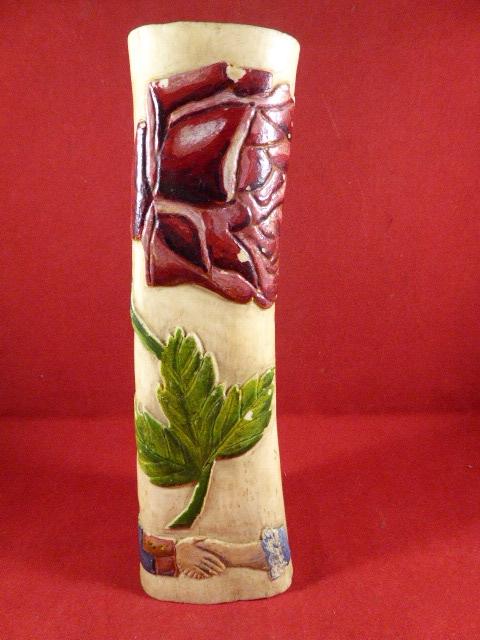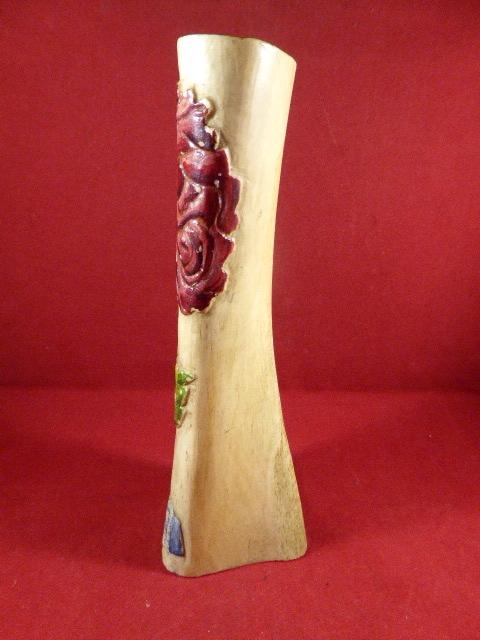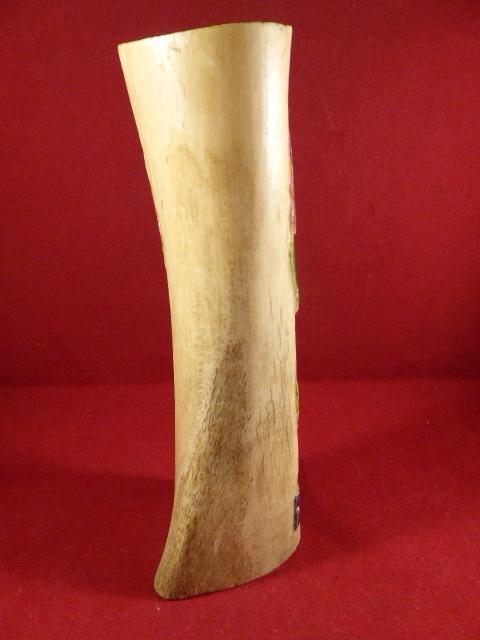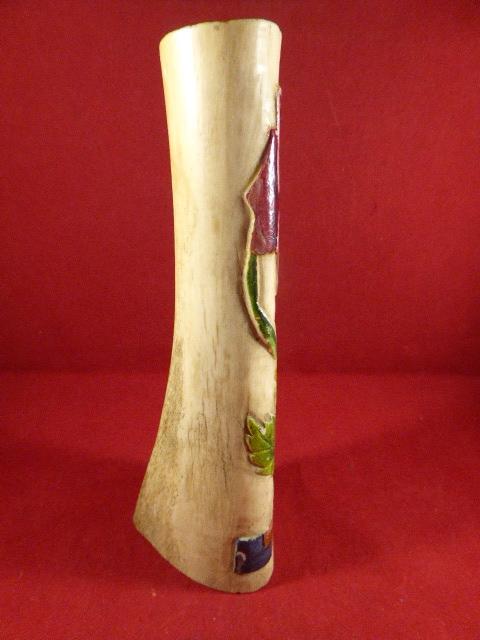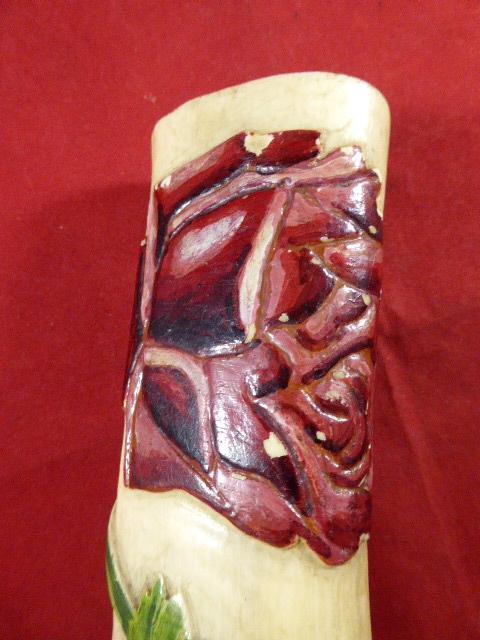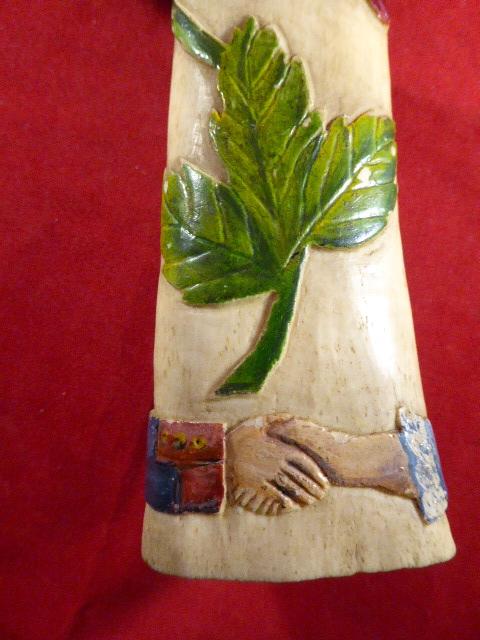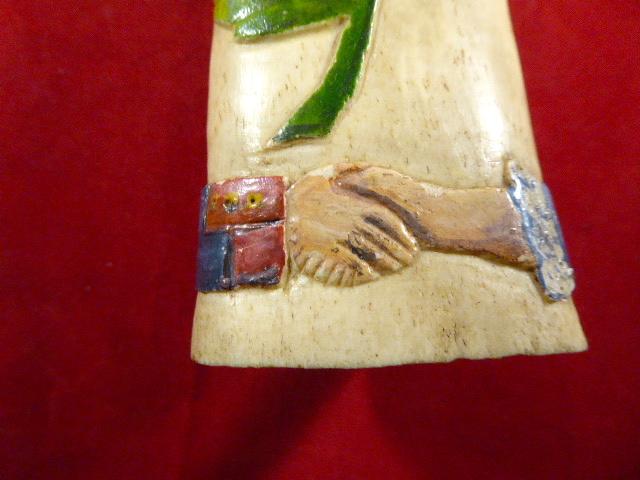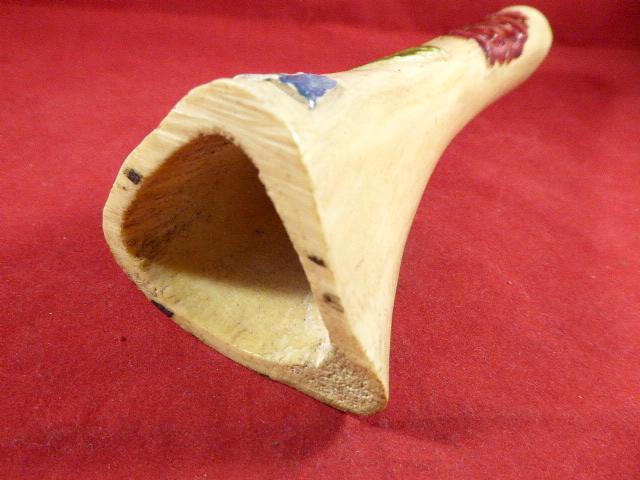French Napoleonic Prisoner of War Carved and Painted Cow Shinbone circa 1810
Here on offer is a beautiful example of a carved and painted cow shinbone, possibly made by a French Napoleonic prisoner of war (POW).
When I acquired this piece of POW art, I was told a French Napoleonic POW had made it but I can’t guarantee this.
I must say that I have only seen a couple of carved shinbones from the Napoleonic period, as most of the POW art is usually smaller and finer in detail. What convinces me that this piece probably comes from that period is the painted image of the “holding hands” at the bottom of the carving that seem to depict the French soldiers uniform colours (cuff) of that period and a lace work ladies cuff from the same time.
The main carved image, in relief, depicts a beautifully carved and painted rose, so I believe this piece was made to be sold as a “love token”.
The carving is in excellent condition with only some slight loss of paint to the rose.
The POW’s used what materials they had to hand and cow bones provided an excellent carving medium and they where easily obtained from the kitchens.
My understanding is the number of French prisoners who were captured and held in British prisons from the Seven Years War in 1756 to Napoleon’s defeat at Waterloo in 1815 was phenomenal. During their confinement the British government encouraged them to use their time and available resources productively, and so they gathered any available materials such as scraps of bone, wood, metal, string, wire, canvas, horsehair, nails and glass and used them to create objects. On designated days these wares were sold to British civilians in the prison marketplace, known as ‘depot’, markets. At these markets the local farmers and tradesmen would sell their goods to those prisoners who could afford to buy them, usually high ranking officers who would receive money from their families abroad. However, the other ranks were totally without any sort of income and this made life especially hard. Owing to a long dispute between the British and French as to which country was responsible for feeding and clothing the prisoners, they received only a meager ration of food, no clothes and no luxuries such as soap, or medication for their ill-tended wounds. Thus, the prison markets afforded an opportunity for the prisoners to dispose of their own wares, which were usually objects they had been trained to make in their own country as civilians.
The carving is 7” (17.7cm) high and weighs a heavy 312g.
Please see my TERMS OF BUSINESS regarding Deliver Charges and Insurance regarding additional insurance cover, should you require it, BEFORE the item is dispatched.
The responsibility lies with the customer to check with your Customs restrictions that this item can be imported into your country.
Code: 50877
75.00 GBP

